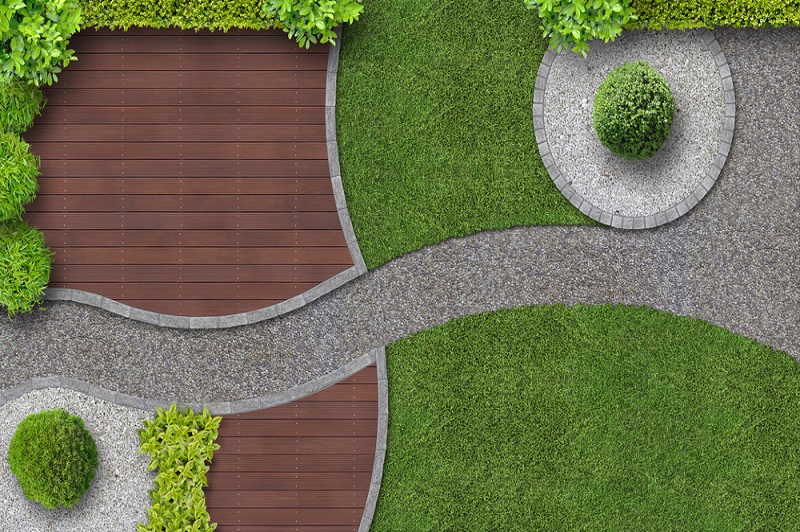The Greatest Guide To Landscapers
Table of ContentsAn Unbiased View of LandscapersWhat Does Landscapers Mean?Landscapers - The FactsNot known Incorrect Statements About Landscapers The Ultimate Guide To LandscapersUnknown Facts About Landscapers
- A garden attribute where water is stood for by an accumulated rock item, generally a crushed rock or granite. These are most generally found in modern-day and Japanese garden design.- A rock or flagstone patio, course, or walkway constructed without a concrete base. The base would be compacted crushed rock and the joints would certainly be an aggregate or walkable ground cover. - A stone retaining or cost-free standing wall surface developed without the usage of mortar. - An underground structure that gather water and permits it to slow percolate into the dirt around it.
Landscape layout that works with a sites' setting in both look and sustainability without unfavorable effects to the atmosphere. Bordering in the landscape is a line of demarcation that creates visual passion in the garden by separating one sector from another section. This can be visual or functional, maintaining one aspect (such as pea gravel) from getting blended right into one more (like bark dirt).
Locations can also have a feeling of "enclosure" provided by trees, other growings, fencings, or screens. The landscape near the entrance to a building. A tree, hedge or vine, educated to expand on a wall or fencing into a specific pattern. Particularly beneficial for fruit trees, making it very easy to harvest the fruit and including mess.
Get This Report about Landscapers

The element in a landscape layout or location in a landscape that is meant to be most popular. The focal point can be a plant, stone, statuary, gathering space, or other landscape feature.

The Facts About Landscapers Uncovered
Reduced plants that are permitted or motivated to spread out over a location. Can refer to any "hard" yard aspects including statuary or stones but most frequently is utilized to refer to paths, outdoor patios, and walls - Landscapers.: Height difference in between the degree of water in a pond (or the level of the pump if it rests outside the pond) and the upper outlet of water which impacts performance of the water pump in gph (gallons per hour).
A chemical used to manage weeds. Fencing boards that run flat, usually utilized in modern or Japanese-inspired landscape layouts. Lines that define spaces see here within a landscape concept. These frequently expand from edges or essential functions of an existing structure. Correct use imaginary lines can help the landscape really feel connected to the home and other components.
Conventional PNW landscapes are informal. A plant that spreads out even more than desired, or right into habitats where it does damage.
Some Known Incorrect Statements About Landscapers
Can include head positionings and protection, pipe sizing, GPM specifications, and products needed to install this system. Licensed specialist that creates landscapes, schooled in design and style as well as in horticulture.
The professional that plans and creates landscape jobs, normally at a residential or little business level with the significant layout catalyst on growings. Landscape designers commonly have less education than Landscape Architects and are not certified. A completed landscape design, outlining all components for the brand-new landscape. This generally takes the form of a drawing theoretically.
Making use of many plantings of the very same variety to fill up in an area in the landscape. This can lower upkeep and water usage in the garden.
A layer of compost or bark dirt applied at the base of a plant. A plant that was present in a geographical area prior to individuals began altering the landscape.
The Of Landscapers
Just how the garden or a garden aspect is set up in relationship to an existing or new feature or to an instructions. Yards that are not trimmed however expanded in landscapes as perennials.

Plants that provide seasonal rate of interest and then pass away back in the wintertime. Cold season turf that is the most typical lawn yard in Portland, OR and the rest of the PNW.An open roofed framework over an outdoor patio or other landscape attribute.
Basalt accumulated varying in dimension from 1/4" to dirt. The most common landscape gravel in the PNW. Area of the landscape made to deal with water till it can saturate into the ground. A chain that regulates water as it takes a trip More Bonuses from a roof rain gutter to the ground. Yard framework that creates a growing area that is consisted of and greater than the surrounding grade.
Structure made of timber, concrete, paving rocks, blocks or other materials for stabilizing inclines and stopping excessive erosion. Slim gutter. Producing a garden feature being composed mostly of stones with plantings that match and can flourish in the rocky atmosphere. Lawn sprinkler head style that turns More Bonuses a stream of water throughout an area.
The Basic Principles Of Landscapers
